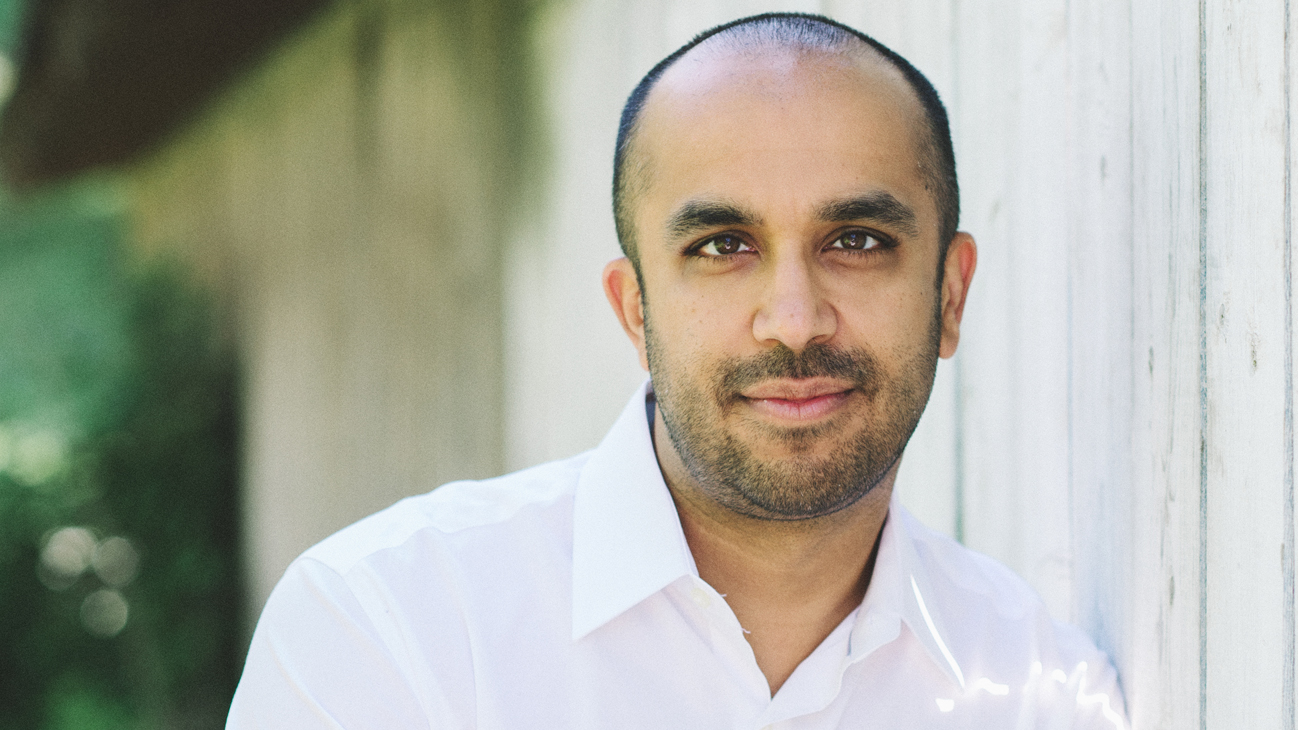A Harvard MBA, New York Times bestselling author, award-winning blogger, and one of the most popular TED speakers in the world, Neil Pasricha is “a pied piper of happiness”* who dazzles audiences with ideas and frameworks that skyrocket happiness into the stratosphere. With infectious enthusiasm, heartfelt authenticity, and a “what works” authority, Pasricha draws on the latest research in happiness to increase individual performance and create a more positive and productive workplace.
In his latest Toronto Star column, he offers up some reading that can help up shake off gloomy days:
Depression? Rising. Anxiety? Rising. Screaming at the barista who made your coffee wrong by accident? Rising.
Look, it doesn’t matter where you live, how much money you make, or how successful you are, everybody has days where we feel tied up in a knot inside.
So what do we do?
Well, today I thought I’d share five books that give me grounding and perspective whenever I feel like I’m under a black cloud.
1. The Art Of Living by Epictetus
Last year I stayed in a hotel called The Taj in San Francisco while on book tour for The Happiness Equation. It’s an Indian chain, so I shouldn’t have been surprised when I pulled open the top drawer of the bedside table and there was a copy of The Vedas lying there. But it was strangely jarring. I’ve been used to seeing Bibles in hotel rooms my whole life. And then suddenly there’s something else. “Hmmmm,” I thought, “it’s not The Bible, necessarily, it’s a thousands-of-years-old grounding guidebook of stories and lessons for people sleeping far from home.” That got me thinking. What book would I put in the bedside table of my own hotel chain? What would you put? I never answered the question until recently. I think my hotel bedside table book is The Art of Living by Epictetus. I’ve found great wisdom and joy flipping through this 2000-year-old book of simple philosophical notes written by a slave born on the edges of the Roman Empire in 55 AD. It’s a perfect book to flip through to calm anxieties before falling asleep. Sample entry to share a taste: “It is better to do wrong seldom and to own it, and to act right for the most part, than seldom to admit that you have done wrong and to do wrong often.”
This is a first-person memoir written by the French editor of Elle after he had a stroke and woke up 20 days later with locked-in syndrome. He had no way to communicate with the outside world . . . except through one blinking eye. One blinking eye! He wrote this entire book with that eye (and a helpful nurse who held up an alphabet card for him) and then died two days after the book came out. I had seen the fantastic movie version years ago but when I came across the book in a bookstore I realized that I didn’t even know it was a book. Vivid, heartbreaking, and makes you want to squeeze the life out of every day you got.
3. If This Isn’t Nice, What Is by Kurt Vonnegut
This is a collection of every commencement speech Kurt Vonnegut made over about 40 years until his death. So much wisdom. The book is made with a ton of TLC so other little one-offs (like magazine articles, award speeches, etc.) are also included. The big note is you do not need to like Vonnegut’s fiction to like this book (I’ve only read Cat’s Cradle and didn’t love it) but simply appreciate how this writing superpower was able to distill complex eternal wisdom into simple positive inspiration that you can read in a few minutes at a time.
4. The Reason I Jump by Naoki Higashida and translated by David Mitchell
According to the introduction, this is the only book ever written about autism by someone with autism. Japanese teenager Naoki Higashida wrote this book with a Japanese alphabet pad and an assistant, one character at a time, and you can feel that slow tenderness and passion as he answers question after question after question. Why do people with autism talk so loudly and weirdly? Why don’t you make contact while talking? What’s the reason you jump? David Mitchell is one of my favourite novelists so I found this book while searching for bibliographical scraps. I was in for a major surprise. In the introduction, David Mitchell shares how his son has severe autism and he, like many others, struggled to identify, relate, and support his child . . . . . . until he read this book. He then worked with his wife to translate it at the request of friends and the book found a giant Western audience after being trumpeted on The Daily Show. Completely expanded my perception of being human with an entirely new worldview.
5. You Are Stardust by Elin Kelsey
Four books is a lot! So let’s close with a beautiful picture book that reads like something Neil Degrasse Tyson would tell your kids if he was over babysitting. The opening lines over the first few pages are: “You are stardust. Every atom in your body came from a star that exploded long before you were born. You started life as a single cell. So did all other creatures on Planet Earth. Like fish deep in the ocean, you called salt water home. You swam inside the salty sea of your mother’s womb. Salt still flows through your veins, your sweat, your tears. The sea within you is as salty as the ocean. The water swirling in your glass once filled the puddles where dinosaurs drank.” Beautifully head-trippy, relaxing, meditative, metaphysical little book before bed.
So next time you’re stressed, ditch the cellphone, ditch the social media, and just pick up a book that helps brighten the mood.

